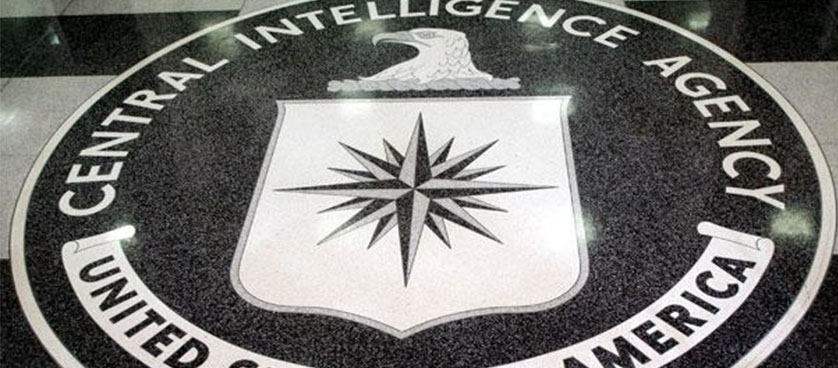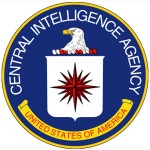How the CIA analysts are trained
The Sherman Kent School for Intelligence Analysis was created in 2000, in order to address the Agency’s analytic weaknesses, being meant to enable intelligence officers to work in cross-component teams and to increase their analytic depth and improve their expertise in producing finished intelligence analysis. It was named after Sherman Kent, a leader in developing the profession of intelligence analysis, who also had a great impact in turning DI into what it is today.
Before going into more details, a short history lesson to better understand the circumstances that led to the creation of this School. In 1998, DCI George Tenet gave a classified internal briefing regarding the CIA’s problems and the possible solutions, according to an article published in US News and World Report. Moreover, he presented a 10-year Strategic Direction, while also stating that, in his opinion, the Agency’s espionage capabilities have decreased after the Cold War. This led to an emphasis on the fact that past practices can impact current developments and the CIA’s contribution to national security policy making. One week after this speech, CIA failed to warn American policymakers about India’s plan to test nuclear weapons. As a result, the Agency’s limitations were brought up to surface and speeded up the implementation of the above-mentioned strategic plan. Although many causes were mentioned, the main one was the inability to add together all the clues regarding a possible nuclear test and warn the policymakers. This failure in analysis led to charges of “lack of critical thinking and analytic rigor”. Admiral David Jeremiah, who led the official investigation into the failure, recommended that it was crucial to hire more analysts, improve their training and increase their contact with outside experts in order to enhance their conventional wisdom.
And thus, The Sherman Kent School for Intelligence Analysis took birth. According to Tenet, whose priority became the implementation of Jeremiah’s recommendations, the School would teach generations “the best of what we as an Agency have learned about the craft of analysis”, by offering four main programs: a 26-week career analyst training program in which all new analysts are enrolled; managing and teaching analysis program; intelligence manners seminar series and academic outreach and intelligence analysis studies program.
What do analysts do?
Briefly, expertise, or ‘the skill of an expert’, is crucial for the production of accurate intelligence analysis. Intelligence analysis refers to experts’ interpretation of ‘raw’ data collected by the intelligence community. Therefore, increased analyst expertise should result into better interpretation, leading to a high quality ‘product’. And this the main purpose of the Kent School: to increase expertise.
CIA uses a complex web in order to produce multi-disciplinary analysis. As surprisingly as it may seem, the analysts are not hired by the CIA or by the DI; they are hired by individual DI offices and then assigned to groups that cover specific areas. Afterwards, they are assigned a specialty (political, military, economical, scientific, technical or weapons intelligence, for instance – according to the CIA website). For the most part, each analyst possesses only a small area of direct responsibility, which is defined by a combination of their regional area and discipline; works in teams with analysts of other disciplines and interacts with other regional or disciplinary analysts as the need arises. So, an analyst’s expertise varies on his or her regional knowledge, disciplinary theory and intelligence methods in general:
-Regional expertise: area studies (geography, history, sociology etc.). The DI’s regional offices are responsible for an analyst’s regional expertise, developing it by providing language training, regional familiarization through university courses or in-house seminars;
-Procedural expertise: knowledge of ‘tradecraft’ – the sometimes unique methods and processes required to produce intelligence analysis. The Kent School represents the repository for tradecraft information and its training courses are the main means of distribution to both analysts and managers;
-Disciplinary expertise: theory and practice that underlines an individual’s analytic occupations (for instance, economic or military analysis are built upon the academic disciplines of economics or military science, obviously). It is developed through the Occupational Council – attached to the Kent School – which has representatives in all offices as focal points for disciplinary resources.
How are the new analysts trained?
The School’s training program for new analysts – the Career Analyst Program (CAP) – is the ‘first comprehensive program for professional intelligence analysis’, according to a CIA press release.
At the beginning of 2002, the courses were as following: during the first week, an introduction to intelligence topics included the history, mission and values of the CIA, as well as a unit on the history of intelligence an literature taught by the Center for The Study of Intelligence’s (CSI’s). Next, during the following five weeks, analysts are introduced to a variety of skills including analytic thinking, writing and self-editing, briefing, data analysis techniques and teamwork exercises, these representing the basic skills for a CIA analyst. After these five weeks in the classroom, the students go on a four-week interim assignment meant to help them understand how the DI relates to other CIA components, making them better understand their future role. Then, they return to the classroom for another four weeks of training in more advanced topics: writing and editing longer papers and topical modules addressing issues like denial, deceptions, indicators and warnings. These special kinds of analysis require advanced and sophisticated tradecraft skills. Afterwards, they go away again, for a second four-week interim assignment and when they return, after another four weeks in the classroom (when they deal with even more advanced topics), a task force exercise awaits them: a two days terrorist crisis simulation outside the classroom. This is an opportunity to show what they’ve learned and to see how they react in a situation that they might come across in real life.
The training program uses interactive teaching methods, so that the learning experience and the expertise acquisition can be maximized.
But offering some training programs is not enough. The ability of the Kent School to achieve its objectives has to be monitored, as it influences the changes that may be necessary in the future for the improvement of the CIA’s analytic capabilities. Assessing if the school provides the DI with greater expertise requires a rigorous comparison between the school’s programs (specific content) and those that have been previously implemented for the same purposes. Thus, this evaluation determines whether the School really represents an improvement to past approaches and practices. However, the success of the School can only be complete if the analyst has the opportunity to apply the newly acquired expertise when s/he gets back on the job after the training has come to an end. So, it’s the institutional assessments that determine whether the analytic training programs allow the CIA to improve the intelligence in order to fit the needs of national security policymaking customers. The Kent School is just a step in the right direction, one that needs to be followed by many others in order for a measurable improvement of the Agency’s analytic quality to take place.
Now, what if in other ‘areas’ such a great emphasis would be put on training? Let’s say, in a ‘normal’ organization. Employees would be doing their work far better and maybe the ‘dreaded’ performance evaluations wouldn’t seem so frightening after all.
References:
Image Source:
Tags: Government - State / Federal performance, Government performance, Performance in USA, Performance Measurement





